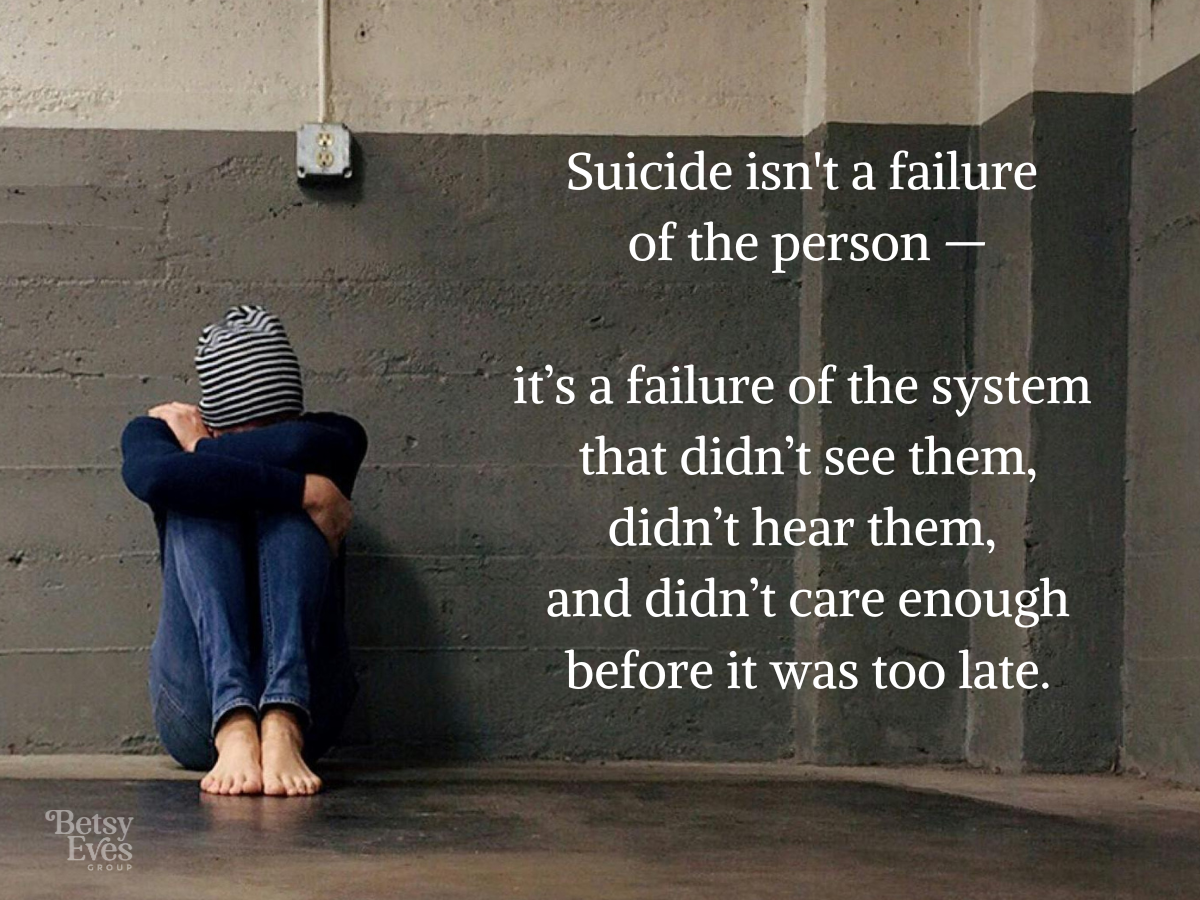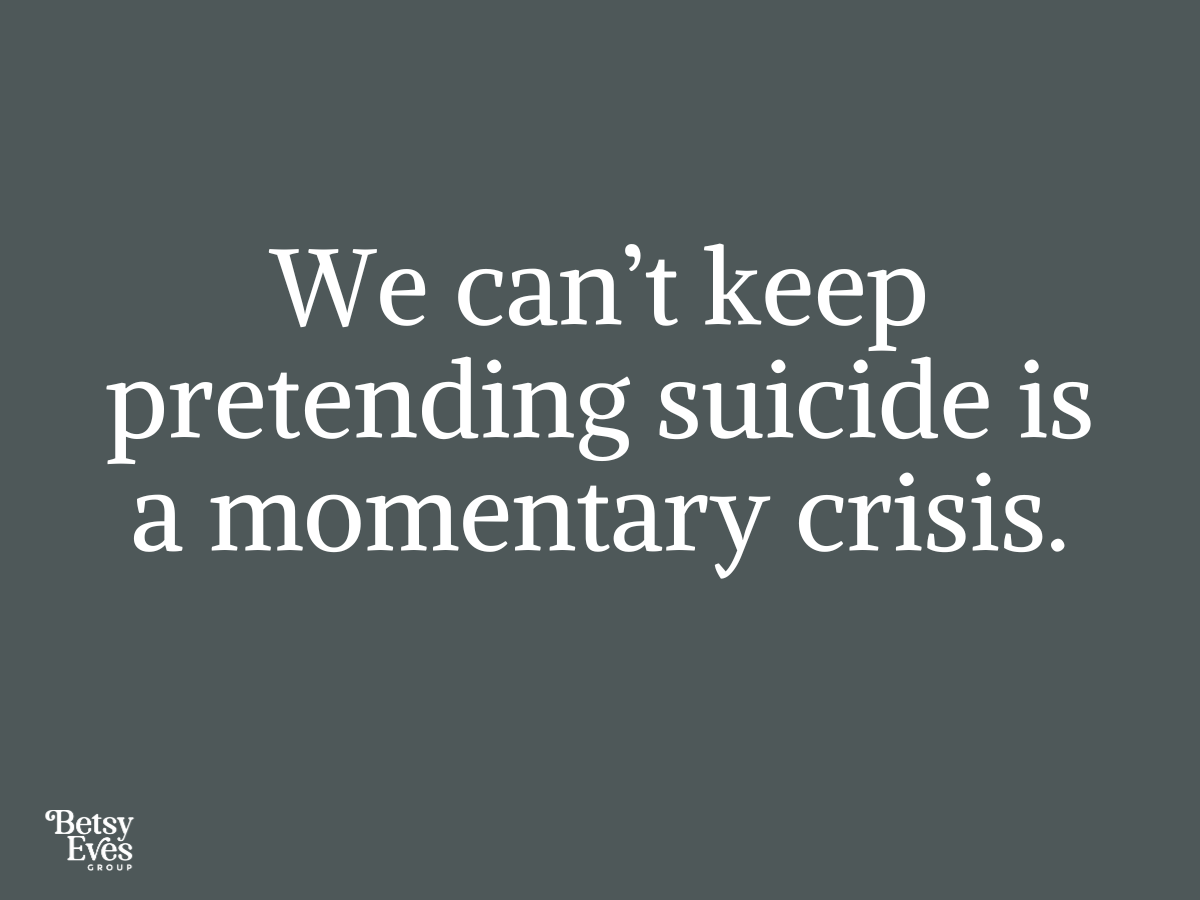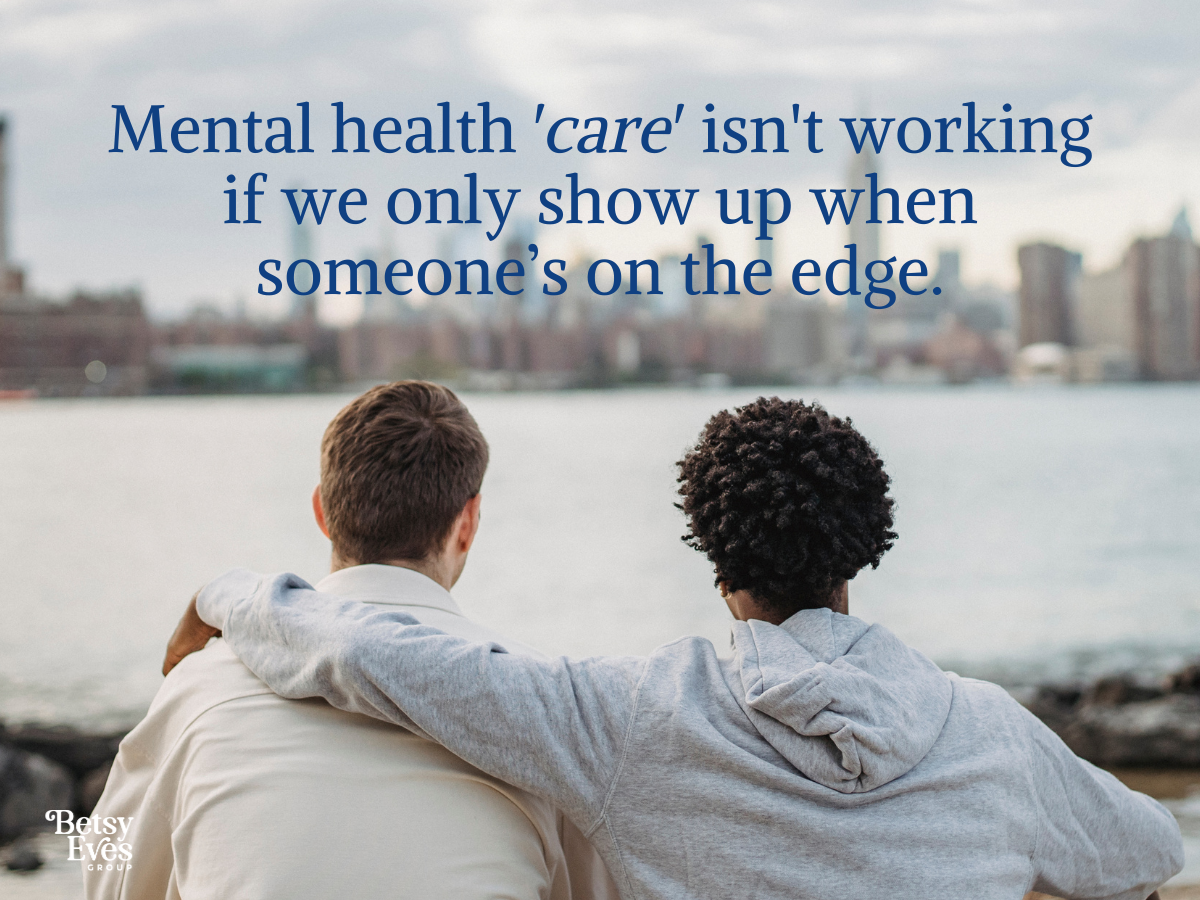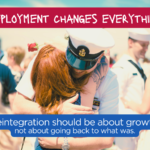It’s September—Suicide Prevention Month. Social media is flooded with feel-good campaigns. The slogans are everywhere: #FaceTheFight, #YouMatter, and #EndTheStigma. But you know what? It’s bullshit.

The reality of suicide prevention isn’t a hashtag or a hotline; it’s standing in your backyard at midnight, staring at your husband, who’s holding a loaded AR-15, ready to die. It’s watching the life you built together—your home, your dreams—fall apart in front of you while his untreated trauma consumes him, and no one sees the full extent of the hell you live in every day.
People love to talk about suicide prevention like it’s a simple thing—”just talk to someone,” “reach out for help.” But no one tells you what it’s like when that doesn’t work. When your husband hides the severity of his PTSD from his doctors. When he smiles and plays strong in front of them, but you’re the one watching him unravel, piece by piece, behind closed doors.
I watched Dave sink deeper into a black hole, and I knew that I was the only one who truly saw it—the only one who knew just how far gone he really was.
I carried that burden for years. His pain, his trauma, his mental wellness—undervalued and untreated. It bled into every part of our lives. It wasn’t just the occasional bad day or an argument; it was a slow, torturous descent into a nightmare. His untreated trauma became my trauma. His pain manifested in ways that shattered me. The mood swings, the emotional outbursts, the suicidal spirals, and the constant walking on eggshells.
And while the world told me to “support him,” no one asked me how I was surviving.
Here’s the brutal truth no one talks about during Suicide Prevention Month: trauma doesn’t just stay with the person who lived it. It invades the people around them, too. Dave’s untreated PTSD twisted our relationship into something unrecognizable. He wasn’t just a victim of his own mind—he became the cause of mine. The chaos seeped into every corner of our life, impacting our kids, our home, my sense of safety.

He wasn’t just hurting himself—he was hurting all of us.
But people don’t want to hear that, do they? They don’t want to talk about the ways trauma turns into abusive patterns, the way it tears through the people who love someone with untreated mental illness. They don’t want to hear that love isn’t always enough to fix what’s broken.
In late August 2023, I had to file a protection order. Let that sink in. After years of saving him from himself, of standing between him and death, of being the one to call the police when his suicidal ideations became too dangerous, I was the one who needed protection.
Because while everyone else thought Dave was the only one suffering, I was quietly being destroyed by the aftermath of his pain. And no one ever talks about what it’s like when you have to protect yourself from the person you’ve spent years trying to save.
I’ve shared more about the mental health challenges of being a caregiver in my blog post: The Invisible Wounds of Mental Health Caregiving.

For years, I felt like I was trapped in this impossible situation—where leaving felt like abandoning him, and staying meant letting his trauma destroy me. And staying? It did destroy me. It broke me in ways I’m still trying to understand.
I had PTSD from the things he did and said during those breakdowns—words and actions that never seem to leave me. I had flashbacks, sleepless nights, and this constant hum of fear that lingered long after he would “snap out of it” and apologize. But the apologies never made it better. The damage was done. His untreated mental wellness nearly killed me, too.
People don’t want to hear the raw, ugly truth about how trauma works. They don’t want to hear that sometimes, the people closest to the person struggling get caught in the crossfire. But here’s my reality: I stayed with Dave because I knew what abandonment felt like.
My parents left me at a homeless shelter after my own suicide attempt when I was 19. That trauma—feeling like I didn’t matter enough to be saved—followed me into this marriage. I couldn’t abandon Dave, even when staying was destroying me, because I never wanted him to feel the way I did.

But here’s where Suicide Prevention Month fails. It doesn’t talk about the real cost of saving someone. It doesn’t talk about the spouses, the kids, the families who bear the brunt of untreated mental illness.
It’s easy to say “get help,” but what happens when the person refuses? What happens when the help isn’t enough, when the trauma has taken root so deep that it poisons everything around them?
No one talks about how caregivers—the people like me—are also at risk of losing themselves in this fight.
I stayed with him after every suicide attempt, every breakdown, every moment where he swore he’d change, but deep down, I knew it wasn’t enough. And it’s not just Dave—it’s the system that fails people like him, like us. It’s the doctors who didn’t see the full picture, the lack of resources for families dealing with this level of trauma, the way we’re expected to carry it all without falling apart.

So, while the world talks about Suicide Prevention Month with its hashtags and ribbons, I’m here to tell you that it’s not enough. Not by a long shot. Because prevention isn’t just about stopping someone from dying—it’s about addressing the untreated trauma before it spirals into something that destroys families.
It’s about supporting the ones who are left behind, carrying the invisible wounds that no one sees.
For more information on my advocacy efforts for caregivers and mental health resources, visit my Advocacy Page.
I don’t have the answers. But I know this: we need to talk about the whole story—the pain, the damage, the ugly, uncomfortable truth about what untreated mental illness does to the people living in its shadow.
Until then, Suicide Prevention Month will be nothing more than empty promises.

For immediate support, you can reach out to the National Suicide Prevention Lifeline, available 24/7.
If you or a loved one are dealing with PTSD, the National Center for PTSD provides resources and support for managing symptoms and understanding its impact on families.



I hear you, Betsy. I see you Betsy. I honor you and care about your wellbeing. I’m at a loss for other words.
Betsy, you are more than a caregiver. I love you and I love what you are doing. You need to be safe and unafraid!❤️